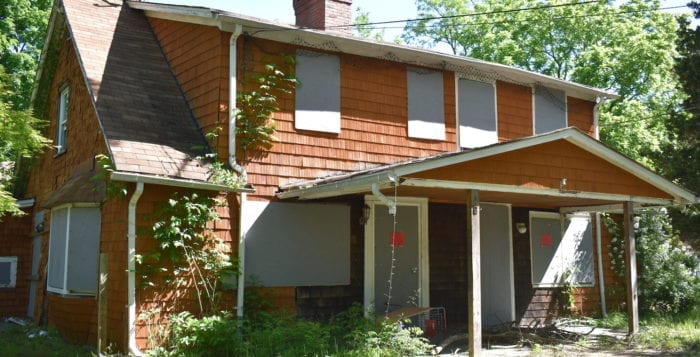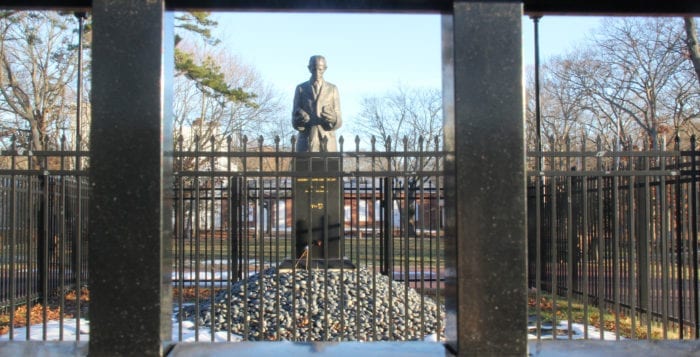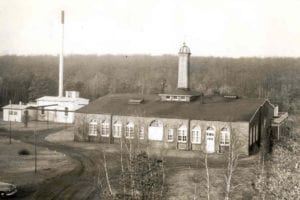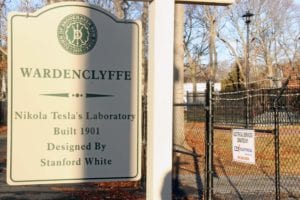By Samantha Rutt
In a triumph for local preservationists and historians, the William Tooker House on Sheep Pasture Road, Port Jefferson Station, has been safeguarded from neglect and demolition. The oldest known structure in the village faced threats of urban renewal before being included in Preservation Long Island’s Endangered Historic Places List in 2021.
Constructed before 1750, the William Tooker House holds immense historical significance. It was once the residence of William Tooker, a descendant of early Long Island colonists, whose family played a pivotal role in the region’s colonial history. The house itself is a testament to the area’s heritage, retaining a colonial Cape Cod-style timber frame on intact fieldstone foundations.
A significant milestone was reached on Oct. 3, 2022, when the Village of Port Jefferson agreed to purchase the property from its current owners using a grant applied for by Steve Englebright (D-Setauket) during his time in the state Assembly. Through the State and Municipal Facilities Program, the Village of Port Jefferson was granted $500,000 to be associated with purchase and restoration of the property.
Since 2022, local officials have worked to decide the future of the property, mentioning using the house as a central museum to pay tribute to the village’s history.
“The mayor seems very focused on the significance of the site, wanting to operate within the parameters of the grant,” now-county Legislator Englebright said of Port Jefferson Mayor Lauren Sheprow’s plan for the property. “The grant will more or less include the acquisition cost as well as a phase one restoration.”
Englebright described a phase one restoration project as stabilizing the existing structure, returning it to as much of the original structure as possible and using whatever may be left over from the grant to refurbish the interior and possibly add or update the existing heating and cooling units.
The village has not yet finalized the acquisition but is actively in contract to do so, Englebright explained. Despite its historical importance, the William Tooker House has been endangered by neglect, demolition threats and insensitive alterations over the years. However, with the village’s eventual acquisition of the property, a new chapter in its preservation is soon to begin.
Preservation Long Island, along with local community members and organizations such as the Greater Port Jefferson Historical Society and Port Jefferson Station/Terryville Chamber of Commerce, have advocated for the preservation of this piece of Port Jefferson’s history. Their efforts have culminated in the village’s commitment to acquire and preserve the property in collaboration with community stakeholders and nonprofit stewardship partners.
To further ensure the preservation of Port Jefferson’s historic resources, including the William Tooker House, Preservation Long Island and local advocates have outlined a series of actions for village officials to undertake. These include conducting a survey to identify and designate all historic resources and districts, leveraging public funding with private donations for rehabilitation work and incorporating historic preservation into downtown revitalization plans.
In addition, the New York State Historic Preservation Office recognized the property’s importance by determining its eligibility for listing on the National Register of Historic Places in 2020. With the village assuming ownership, it can proceed with the application for this designation. If successful, the designation will not only honor the house’s historical significance but also make the village eligible for tax credits, financial incentives and technical assistance for rehabilitation work.
With the William Tooker House now under the village’s stewardship, there is renewed optimism for its preservation and future as a cherished landmark in Port Jefferson. As efforts continue to unfold, residents and historians alike look forward to seeing this iconic structure restored to its former glory.
“Restoring the property will help to develop a sense of place,” Englebright said. “Place is hard to measure but important in developing community identity and pride. The restoration will help to carry and pass on a baton of knowledge for generations to come.”








